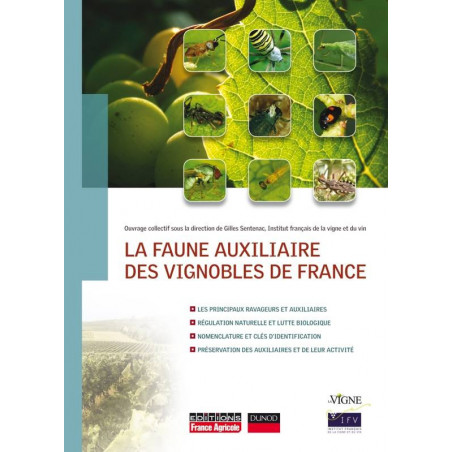Even though the use of plant protection products is often necessary to protect the vine against its aggressors, there is currently a professional, political, and citizen will to limit their use in order to better respect the main components of the environment in which we live. Access to alternative methods, such as biological control, can help achieve this goal. This book, which can be read continuously or approached randomly through one of the developed entries, offers a state of the art on the following points: the natural antagonists (more than 150 species) of insects and mites harmful to the vine, the description, evaluation of regulatory mechanisms, and the effectiveness of biological control methods, simplified keys for identifying, mostly down to the species level, beneficial or natural enemies (mites, spiders, harvestmen, insects) of vine pests.
This guide, the result of the collaboration of sixteen specialists, researchers, teachers, and engineers, is a reference work on the inventory of the vineyard's beneficial fauna, its identification, and its use as an alternative to chemical control. It is accessible to everyone, including students, winemakers, prescribers, researchers, or simply amateur naturalists. The preface of the book is signed by Guy Riba, vice-president of INRA.






